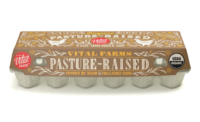Just as food is required to sustain life, packaging might be considered the lifeblood of the food industry. Consumers have become accustomed to having a wide variety of foods available to them from all corners of the world, no matter what season it may be. The days of being able to eat what is grown or raised on your own plot of land are long gone, especially as the world becomes more urbanized.
This would not be possible without packaging. So, the proliferation of available foods also brings with it a plethora of packaging that uses every type of material, in multiple sizes and shapes designed for a growing number of distribution and retail channels.
Mintel (mintel.com), a leading market intelligence agency, recently released its packaging trends for 2018. They include:
- Packaging will play a pivotal role in reducing global food and product waste.
- Online brands will reinvigorate their packaging in order to enhance the e-commerce experience.
- Brands who adopt clear and succinct package messaging will be rewarded as consumers prefer brands that embrace minimalism.
- Brands will be called to keep marine conservation at the forefront of packaging development and to anchor the circular economy for future generations.
- Contemporary packaging formats will see the center-of-store take center stage.
SUSTAINABILITY NOW EXPECTED
Without a doubt, several recent developments in food packaging are driving these trends. Sustainability, for example, has become a baseline for consumers, according to Tom Egan, vice president of industry services for PMMI, The Association for Packaging and Processing Technologies. They expect it to be part of any food brand’s product and packaging. Consequently, you can expect consumer packaged goods companies (CPGs) to look for more recyclable materials or biodegradable materials and other methods of making packaging less damaging to the environment.
While significant innovations may be on the horizon, and consumers are demanding more sustainable packaging, Egan points out that in most cases consumers are unwilling to pay a higher price for sustainable packaging. Still, he says to look for advances in processing and packaging that help prevent food waste.
“All processes that allow expansion of the life of the product or a possibility of distributing the product with the use of fewer resources—such as refrigeration—provides opportunities for new packaging,” Egan says.
Another leading driver is the consumer demand for freshness, according Mike Richmond, a principal of PTIS (ptisglobal.com), a leading packaging consultancy. Increasingly, consumers—especially millennials—are looking for the freshest food out of concern for their health.
MORE DETAILS, FEWER INGREDIENTS
“Clean labels are a real issue,” says Egan. He adds that consumers want clearer information about ingredients on the labels and for processed foods to contain even fewer ingredients.
Research from the Hartman Group (hartman-group.com) backs that up. Their research finds that 65 percent of Americans say companies earn consumer trust by being open about what’s in their products and 55 percent want specific details about how their products were made and who made them.
Food that can be delivered with the minimum amount of ingredients is viewed as healthy and is much in demand. This often places new demands on the packaging as preservatives are removed from the product. Packaging is expected to keep the food protected and fresh for longer periods.
This can be seen in the growing emphasis on food products in the perimeter of the grocery stores. Even there, packaging playing a growing role. In produce departments, for instance, fruits and vegetables that often were displayed without packaging now are being wrapped in packaging designed to extend shelf life and improve the product’s look for extended periods by preventing oxidation.
In the dairy section, shrink sleeves continue to gain traction as methods to extend the shelf life and create a billboard for graphics. Pouches also are being used in dairy allow reclosing and improve the user’s ability to get all the product out of the container. New processing technologies such as high pressure processing and microwave assisted processing are helping to expand the use of flexible packaging, while ensuring improved food safety. In the meat aisle, modified atmosphere packaging (MAP) also is contributing to extended shelf life.
TECHNOLOGY CLOAKS ADVANCES
Not all packaging enhancements are apparent to consumers. For instance, some bakeries are beginning to use MAP packaging to reduce spoilage for preservative-free, specialty bakery products that are often susceptible to mold. Sealed Air (sealedair.com) combines Cryovac Freshness Plus active barrier films with gas-flush processing to deter oxygen ingress and prevent mold growth. This can extend product shelf life from traditional 1-2 week time frames to more than 40 days.
Egan points out that many enhancements that are not obvious exist in the packaging process itself. For instance, he points to modifications that were required to allow the use of short-skirt caps on water bottles. Packaging machines had to be designed for torqueing the caps tight enough to prevent spillage but not damage the thin plastic bottles.
“Technical innovation is fascinating,” Egan says. “It is important as packaging professionals to recognize just what it takes to get something like that done. As you learn what it takes to achieve these improvements, you appreciate the technology that allows these changes to be brought to the marketplace.”
Another way in which consumers’ freshness concerns are affecting packaging can be seen in the center aisles, where some of the most recent packaging releases are utilizing transparency so that shoppers can see the product before making their purchase decision. “Any type of feature or attribute that cues fresh is certainly on trend,” Richmond says.
This is not new. Richmond points out it started when pasta boxes began adding cut-outs. Recently, frozen pizza manufacturers have added windows in the cartons so shoppers can judge the quality and freshness.
“When the actual product can be seen, visual impact is reinforced,” says Eagan. “It’s another visual data point beyond the graphics of the package that provides the promise of a fresh product.”
CLEARLY AN IMPROVEMENT
S&W Fine Foods Intl., a Del Monte Pacific company, recently began using the Klear Can to highlight their pineapple products’ quality and freshness in a clear plastic can. The cans, made by Milacron Holdings (Milacron.com), are injection-molded using multi-layer technology for a high-barrier technology that can be delivered with the same production efficiency and cycle time as a monolayer plastic preform.
The Klear Can is an alternative to metal cans for other products. Co-packers are able to easily integrate the one-piece body into existing production streams and require minimal customization.
In a similar vein, Sonoco (sonoco.com) offers the TruVue clear can, which it launched in conjunction with McCall Farms on that company’s new Glory Farms Slow-Cooked vegetables. The can uses Sonoco’s patented fresh-lock technology and is made of a highly engineered, multilayer plastic substrate, allowing consumers to see the product inside. It also incorporates an EZ-open lid and metal bottom. TruVue has been commercially tested and proven to withstand the rigors of many retort processes, which demand performance in high-temperature and high-pressure environments.
Some brands are combining transparency with pouches to create on-the-go packaging for busy consumers. This is the first transparent pouch in the apple sauce category. “This new pouch mirrors our corporate belief in transparency, honesty and trust,” said Tom Hurson, Tree Top president and CEO. “Everyone deserves good food and we developed the new, clear pouches to return power to people by allowing them to see our quality product before consuming it.
Convenience has long been a driver in food packaging innovation. Especially as use of pouches grow, more brands are incorporating reclosable features into their snack and frozen food pouches. Consumers want to be able to open reclose packaging easily. Richmond says in some cases these features have been “price-optimized” so they are cheaper, but not that easy for consumers to use. For instance, slider zippers offer ease of use. However, due to price concerns, some CPGs are using thin, snap-to-close zippers that are not as convenient.
Within the last few years, cookie brands such as Mondelez’s Oreo have begun using peel-and-seal technology that allows repeated opening and closing of bags to allow easy access and maintain product freshness.
Another type of convenience closure recently appeared on a confectionery product. Mentos Pure Fresh Gum Wallet Packs now include a VELCRO (Velcro.com) closure system. Perfetti Van Melle, the gum manufacturer, has integrated the easy-to-use closure into the pocket-friendly packaging to ensure the product stays sealed and fresh. The PRESS-LOK closure system is a proprietary hook-to-hook technology, made especially for the flexible packaging market. With just a squeeze of both sides, the closures align to create a secure seal that consumers can both feel and hear.
IMPACT OF E-COMMERCE
E-commerce most certainly will impact the direction of food packaging in the coming year. Since Amazon purchased Whole Foods in 2017 and Walmart has its redoubled its e-commerce efforts, online sales of food products is exploding. According to eMarketer, e-commerce sales are forecasted to reach $4 trillion globally by 2020, representing nearly 15% of total global retail sales. Consequently, brand owners must adjust their packaging to this emerging channel.
Traditional packaging has been designed for a well-established distribution chain, Egan says. E-commerce is changing that significantly, and CPGs are responding. However, he explains that if the brand owner has to change the packaging for same product, that creates additional SKUs and they must to plan for shorter production runs and higher costs.
In a recent article in Food Engineering, Jorge Izquierdo, vice president, market development for PMMI, says the impacts already are apparent. “In the past we’ve seen big retailers asking for specific presentations, formats for their own stores. Now we are starting to see online retailers like Amazon asking for specific formats for them.”
“Traditionally, packaging has been designed for those three seconds that you’re looking at the shelf and you’re making a decision,” he explains. “Now, the first time you look at a product, you already bought it. So it’s about experience with the product, and about repeating the purchase.”
Mintel’s trends report states: “Now is the time for brands to consider how packaging can alleviate, if not eliminate, consumer frustration with over-packaged and even under-branded goods sold online.”







